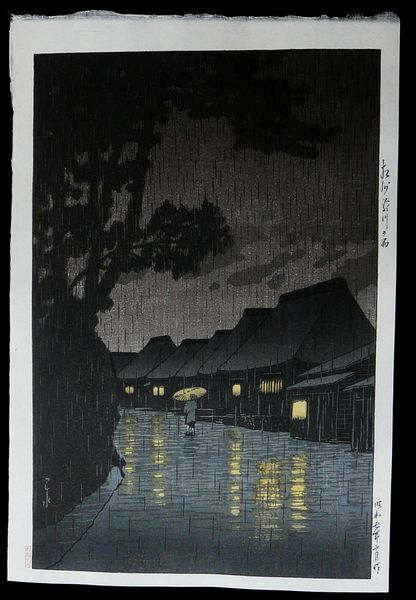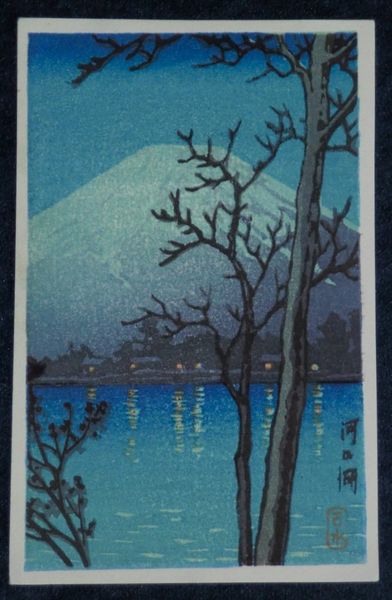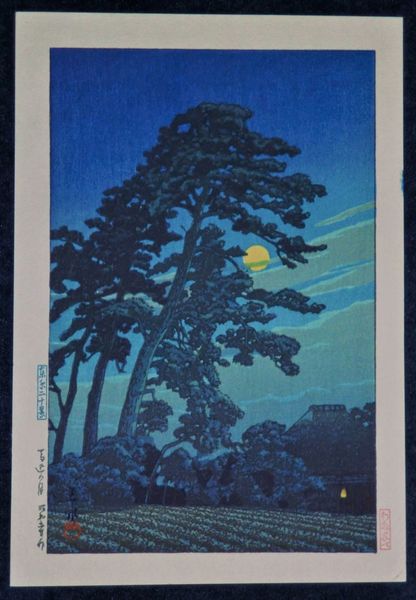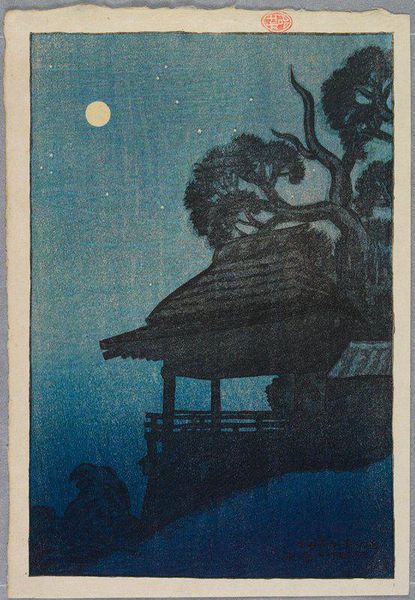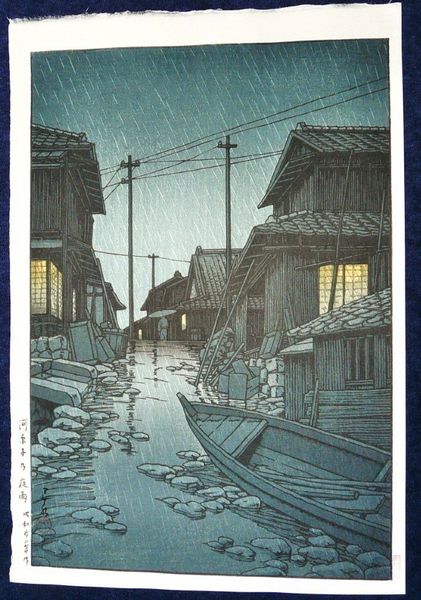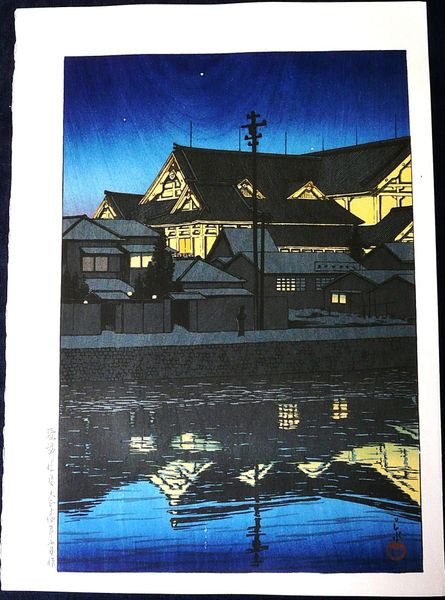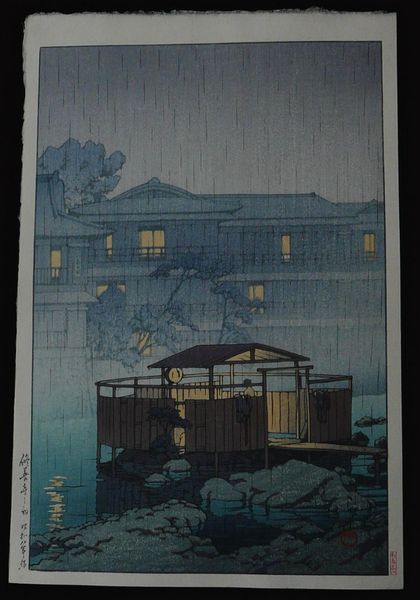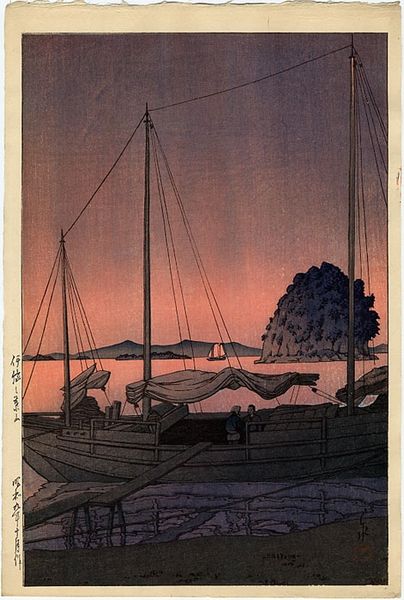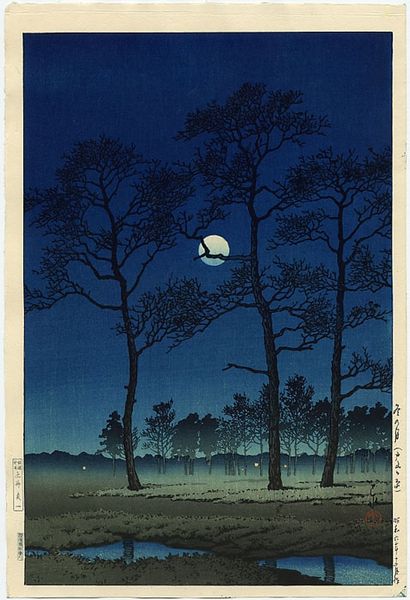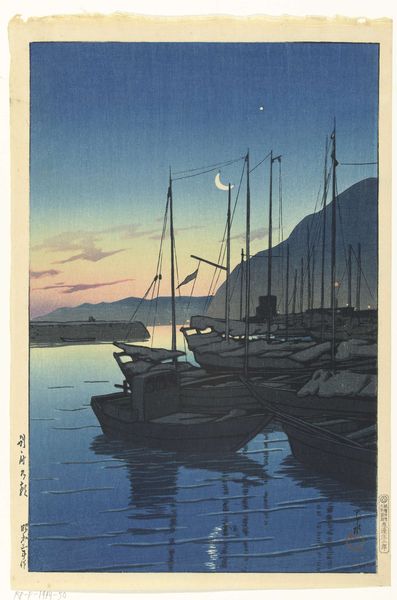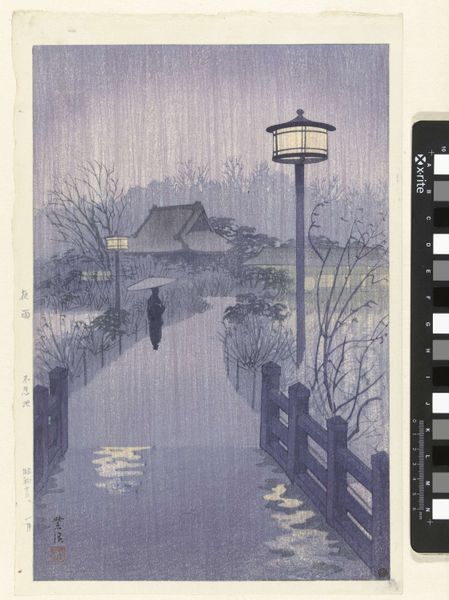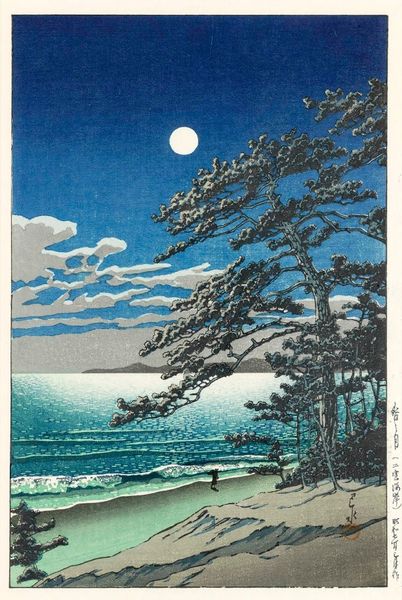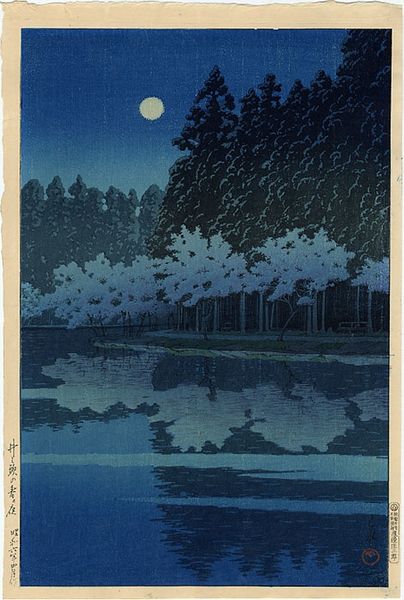
Copyright: Public domain Japan
Curator: What a subtly beautiful woodblock print this is! “Pier at Otaru, Harbour at Night” by Hasui Kawase, made in 1933. The stillness in the scene really strikes me. Editor: The composition is quite masterful; a receding pier with just a few silhouetted figures, bracketed by two upright lamps, leading your eye toward a cloudy, infinite space. The reflection of the lamp's light fragments and shimmers. Curator: Yes, the reflection of light on water! Light itself carries such weight in Japanese aesthetics – here it serves, too, to evoke memory and place. Harbor towns in Japanese culture carry an entire universe of narrative. These figures appear caught between places, perhaps thinking about journeys that await. Editor: The gradation of colors – those blues dissolving into indigo at the pier’s edge and again up into the twilight sky, reinforce a mood of subdued mystery. The composition of the artwork relies on this strict color pallet which offers it such a sophisticated appeal. Curator: I find this image speaking quietly to me about resilience. Maritime settings represent connection, globalism and yet… this image suggests more: the transient nature of that, too. The ships out at sea are still and stoic, seemingly waiting to be guided and to perform their duty, reminding us of our own resolve and path. Editor: A beautifully controlled atmospheric perspective, too, making the background recede into vagueness. In looking more, I also notice how vertical and horizontal lines govern the form and convey balance: pier railing against upright lampposts, contrasted to clouds mirrored upon the waves, all in harmonic arrangement. Curator: In many Eastern philosophies, liminal spaces, like harbors, possess the energy of transformation and hope. Hasui evokes just that feeling, perfectly rendered by that gorgeous, fractured luminescence of the lamps in the still night waters. Editor: You know, looking at it now, I have come to see, yes, a serene synthesis – I now view this piece, too, as one rich with a kind of patient expectancy.
Comments
No comments
Be the first to comment and join the conversation on the ultimate creative platform.
